Photographs: Chaiwat Subprasom/Reuters.
"Given that the immediate priorities in Japan are likely to be social not economic, the aftershocks to the global economies from this disaster may unfold very slowly; many of the economic consequences have yet to be seen. A multinational company whose supply chain could be impacted by the catastrophe should start now by assuming that its business is severely disrupted for an extended period and develop an effective mitigation strategy, Sanjay Kedia, country head and CEO Marsh India said.
...25 facts on Japan's $300 billion disaster
Image: Survivors grieve at a grave of a victim of the March 11 earthquake at a mass grave.Photographs: Reuters.
. . .
25 facts on Japan's $300 billion disaster
Image: Smoke coming from the area of the No. 3 reactor of the Fukushima Daiichi nuclear power plant.Photographs: Reuters.
25 facts on Japan's $300 billion disaster
Image: A man inspects the damage as he tries to retrieve belongings from a destroyed house in Otsuchi.Photographs: Damir Sagolj/Reuters.
. . .
25 facts on Japan's $300 billion disaster
Image: A cook operates a radiation detector over shellfish from Kyushu, Japan.Photographs: Bobby Yip/Reuters.
Most of the supply chain disruption from this catastrophe is likely to be caused by issues associated with infrastructure, energy, utilities, transportation, and restrictions on highway/port access, according to Marsh India, insurance broker and risk advisor.
. . .
25 facts on Japan's $300 billion disaster
Image: Family members of victims of the earthquake and tsunami watch as an excavator digs a mass grave.Photographs: Yuriko Nakao/Reuters.
. . .
25 facts on Japan's $300 billion disaster
Image: A refugee sleeps at a relief center in Minamisanriku town, Miyagi prefecture.Photographs: Carlos Barria/Reuters.
. . .
25 facts on Japan's $300 billion disaster
Image: Sony's tsunami-crippled warehouse is seen near Sendai port.Photographs: Kim Kyung Hoon/Reuters.
. . .
25 facts on Japan's $300 billion disaster
Image: Owada Yuna carries her three-year-old sister Yumeka as she searches for names missing friends.Photographs: Damir Sagolj/Reuters.
. . .
25 facts on Japan's $300 billion disaster
Photographs: Reuters.
. . .
25 facts on Japan's $300 billion disaster
Image: A rescue worker uses a two-way radio transceiver during heavy snowfall at a factory area.Photographs: Reuters.
. . .
25 facts on Japan's $300 billion disaster
Image: An official from Thailand's Food and Drug Administration takes a sample to test food from Japan.Photographs: Chaiwat Subprasom/Reuters.
. . .
25 facts on Japan's $300 billion disaster
Image: A man wearing a mask walks past an electronic board displaying the Nasdaq average.Photographs: Issei Kato/Reuters.
. . .
25 facts on Japan's $300 billion disaster
Image: Snow is seen on rubble at a factory area.Photographs: Reuters.
. . .
25 facts on Japan's $300 billion disaster
Image: People make their way as they look for their houses among the ruins of destroyed residential area.Photographs: Lee Jae-Won/Reuters.
. . .
25 facts on Japan's $300 billion disaster
Image: People ride their bicycles in a flooded road at an area destroyed by an earthquake.Photographs: Kim Kyung-Hoon/Reuters.
Insured losses from Japan's earthquake could be as high as $35 billion. Reinsurance firms, like PartnerRE, EverestRE, and RenaissanceRe have exposures to the country.
Aflac has 80 per cent of its earnings exposed to the Japanese market, according to The Business Insider.. . .
25 facts on Japan's $300 billion disaster
Image: A baby and her mother are scanned for radiation before they enter an evacuation centre in Fukushima.Photographs: Reuters.
. . .
25 facts on Japan's $300 billion disaster
Image: An aerial view taken from a helicopter from Japan's Self-Defence Force.Photographs: Reuters.
. . .
25 facts on Japan's $300 billion disaster
Image: A man monitors stock prices at a securities trading firm.Photographs: Reuters.
. . .
25 facts on Japan's $300 billion disaster
Photographs: Reuters
At least 760,000 households in 10 prefectures were without running water At least 760,000 households in 10 prefectures were without running water.
. . .
25 facts on Japan's $300 billion disaster
Photographs: Reuters.
. . .
25 facts on Japan's $300 billion disaster
Photographs: Reuters.
. . .
25 facts on Japan's $300 billion disaster
Image: Fisherman Ryusuke Isogai in front of his ship (R) , which was washed onto the shore.Photographs: Toru Hanai.
. . .
25 facts on Japan's $300 billion disaster
Image: Thailand's Food and Drug Administration takes a sample to test food imported from Japan.Photographs: Sukree Sukplang/Reuters.
. . .
25 facts on Japan's $300 billion disaster
Image: Volunteers prepare food to be distributed to victims at a shelter.Photographs: Damir Sagolj/Reuters.

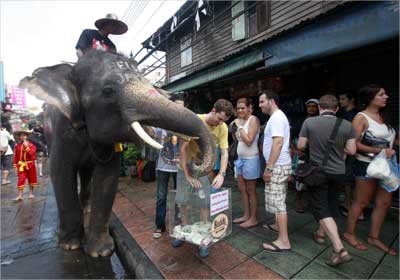
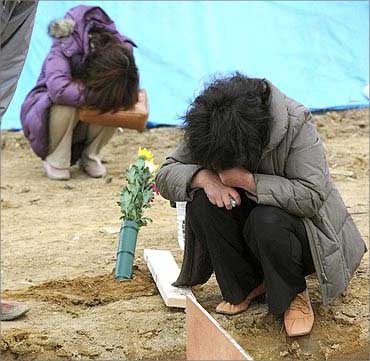
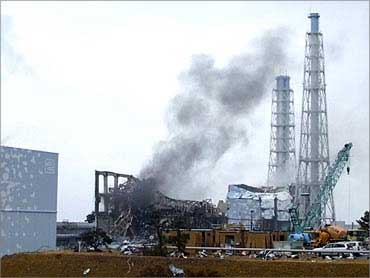
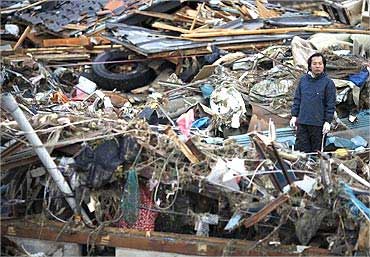
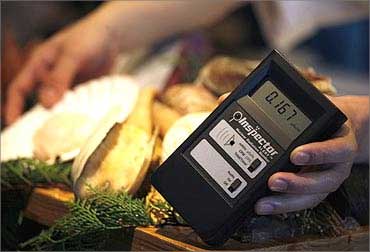

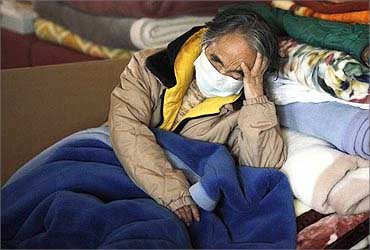

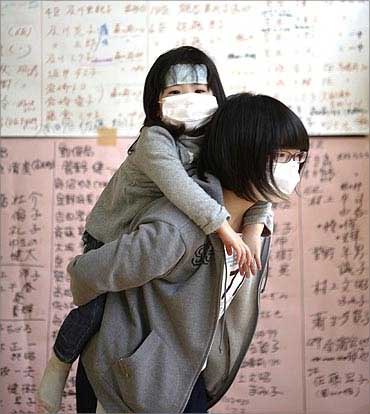

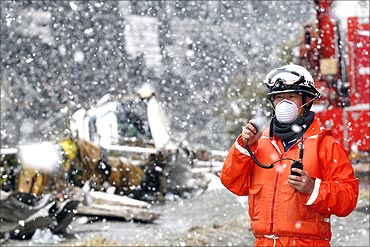
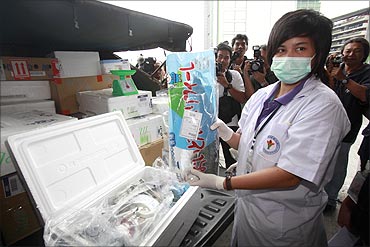
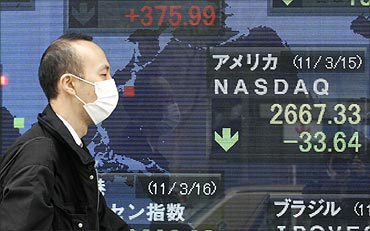
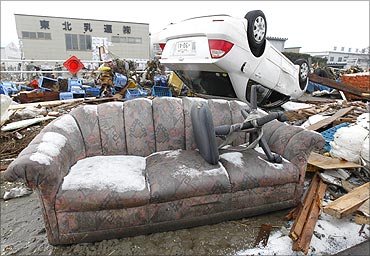

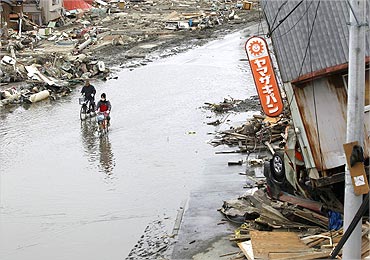
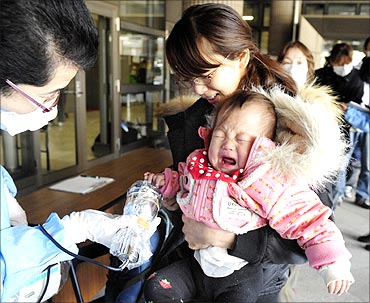


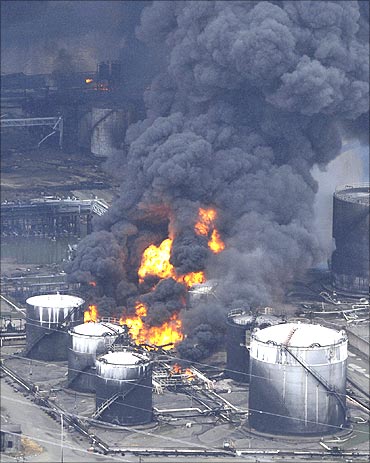
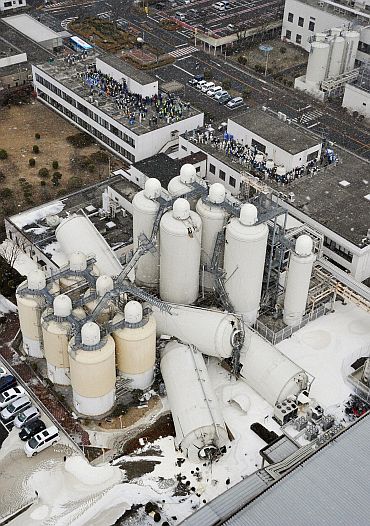
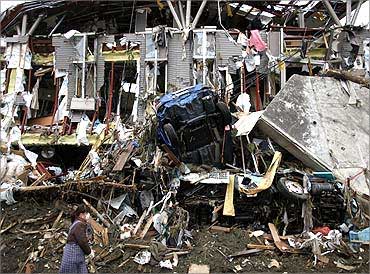

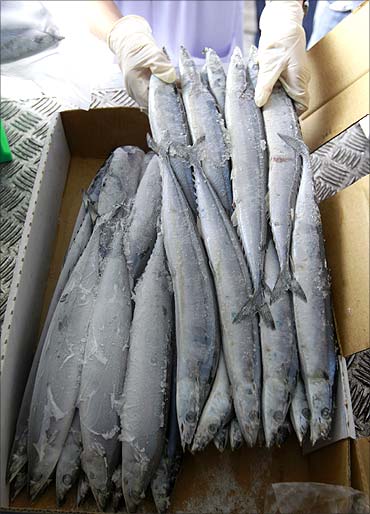
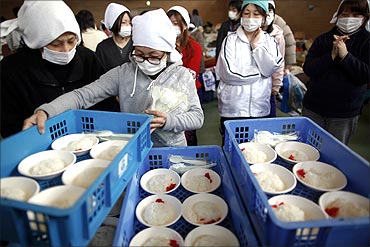
article